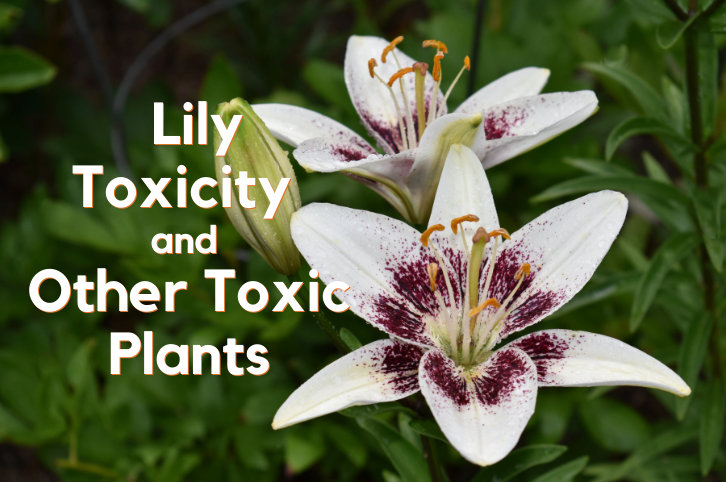With spring approaching and the flowers in bloom, it may be tempting to fill your home with new and colorful greenery. However, many plants and flowers can put your pet’s health at risk. At Homey Gnome Veterinary Clinic, we want to make sure the plants in your home are safe for your furry friends.
Here are a few things you should know about plant toxicity and which flowers you should stay away from this spring.
Lilies
Lilies come in a wide variety of species, many of which can be extremely dangerous for your pet.
True Lilies and Daylilies
When it comes to toxicity, the lilies of the True Lily and Daylily families are the most concerning. From the petals to the pollen, all parts of these plants are toxic. Toxicity causes kidney failure in cats and can be fatal. Although the effects are less serious in dogs, True Lilies and Daylilies should be avoided in any home with pets.
Lily of the Valley
With their dainty bell-shaped flower, Lily of the Valley is often used in bouquets or as a fragrant addition to your backyard landscaping. Unfortunately, these pretty flowers contain cardiac glycosides that can cause significant harm to your pet. These toxins can cause a variety of symptoms, including abnormal heart rates and arrhythmias. While all parts of this flower should be considered toxic, the majority of the toxins are concentrated in the plant’s bulb.
Calla Lilies and Peace Lilies
Although Calla Lilies and Peace Lilies are generally considered less dangerous, they can still cause issues for your pet. These flowers contain calcium oxalate crystals that can cause oral burns and digestive upset when consumed.
If your pet encounters a toxic plant, please give us a call as soon as possible. We can help you determine whether the plant is toxic and ensure your pet gets the appropriate medical attention they may need. If your pet’s emergency occurs outside of our normal business hours, please visit our resources page to locate the nearest emergency clinic.
Spring Bulbs: Tulips, Hyacinths, and Daffodils
A colorful spring favorite, spring bulbs such as tulips, hyacinths, and daffodils should be planted with caution around pets. The toxins in these colorful flowers are primarily concentrated in the bulb. However, consuming other parts of the plant can also cause problems.
If your pet consumes one of these spring flowers, they may experience symptoms of digestive upset such as vomiting, diarrhea, lethargy, and depression. Pets can also experience more severe symptoms such as difficulty breathing, elevated heart rate, and seizures.
The best way to keep your pet safe is to limit their exposure to toxic plants. Avoid bringing these flowers into your home or keep them safely out of your pet’s reach. When planting spring bulbs in your yard, make sure they are in an area your pet can not access without direct supervision. For more information about toxic plants and which ones to avoid, you can also visit the ASPCA’s Toxic Plant Guide.
Final Thoughts
While flowers and plants are a great way to add some cheer to your home, it’s essential to make sure your plants are safe for your pet. If you have additional questions about toxic plants or would like to schedule an appointment, please give us a call at 651-202-3388.
Image credit: Unsplash


